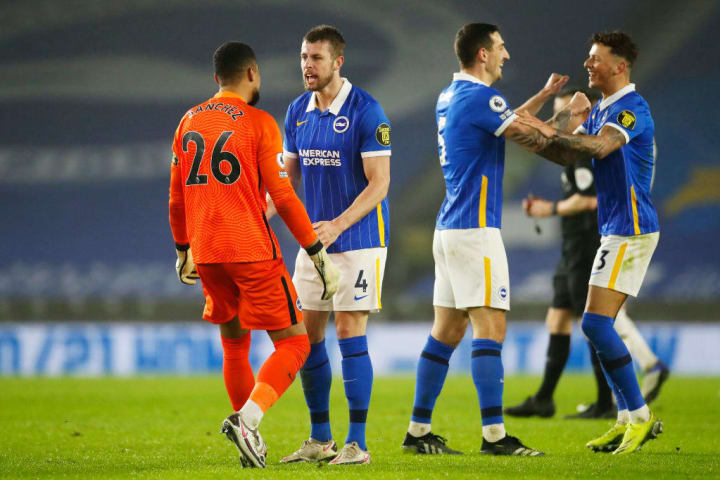
Tottenham recent poor run of Premier League form continued on Sunday night, as they slumped to a 1-0 defeat away at relegation threatened Brighton.
Since ‘kickstarting their title bid’ with a fine 2-0 victory over Manchester City back in November, Spurs have won just three of their subsequent 11 league games.
Throughout this period, a common theme has been a frightening lack of creativity and nowhere was this more evident than against the Seagulls this weekend. Going into the game, Brighton were perched perilously close to the drop zone. Despite this, they managed to keep Spurs at arm’s length throughout.
After going ahead 17 minutes in, as a result of fine team move involving Alexis Mac Allister, Pascal Gross and Leandro Trossard, Graeme Potter’s charges retreated into a well organised 5-4-1 out of possession.
In doing this, they were essentially challenging the opponents to break them down, a task that was well beyond Tottenham’s capabilities on Sunday. Spurs registered just one shot in the entire first half – a scrappy effort pulled wide by Steven Bergwijn – despite dominating possession. It was turgid stuff.
Things were not much better after the break either. Although the second half saw Spurs rack up seven attempts on goal – the exact same as their 17th placed opponents – they never looked like converting.
The reasons for this unacceptable attacking display are numerous. For starters, going behind did not help. When Spurs manage to poke their noses in front, Mourinho’s style makes perfect sense. Few teams are more devastating in transition and, although not perfect, Tottenham have proved themselves capable of soaking up pressure like a premium brand sponge in the past.
Saying that, when they are chasing a lead, Tottenham are often tragic to watch.
This trend continued against Brighton as they lacked coherence, consistency and any discernible plan or patterns of play. If Spurs had prepared in training for the unthinkable possibility of going behind in a game of football, it did not look like it.
Mourinho’s selection did not help their case either. The team was packed full of players lacking quality on the ball. Lined up to 3-4-3, wing-backs Moussa Sissoko and Ben Davies contributed next to nothing in the attacking phase, while Matt Doherty watched on from the sidelines.
Pierre-Emile Hojbjerg, for all of his destructive brilliance, was also ill-suited to the task at hand. What Spurs needed was someone capable of picking the Brighton lock.
Up front, Gareth Bale was given a run out despite his recent patchy form. It was another nothing display from the forward who is increasingly looking like a signing fuelled by doe-eyed nostalgia, rather than fiscal or footballing sense.
That brings us to the third reason for Tottenham’s creative dirge – the absence of Harry Kane.
Just as Leicester’s reliance on another mercurial English striker was exposed earlier on Sunday, the devastating impact that Kane’s absence could have on Spurs over the next few weeks was laid bare against Brighton.
Much has been written about Kane’s development into one of country’s best creators this season, but perhaps the best endorsement of his ridiculous influence came in the form on his side’s stodgy display without him.
The England captain has been directly involved in 68% of Tottenham’s Premier League goals this season, more than any other player in the division, and it is becoming increasingly clear that his personal brilliance may have been papering over cracks in Spurs’ flawed approach earlier on in the season.
